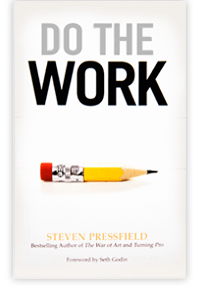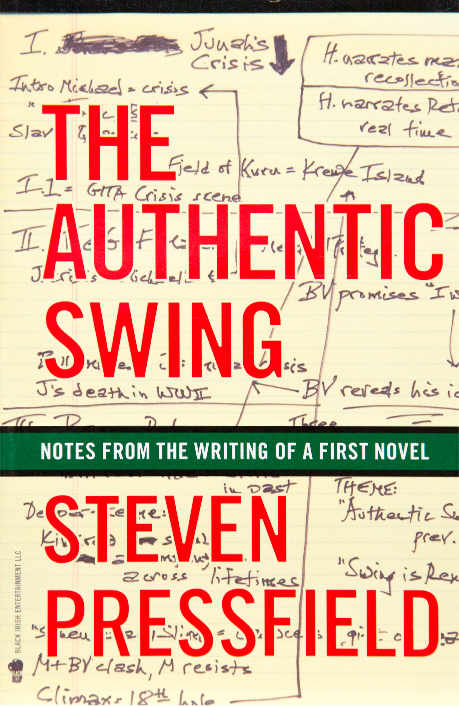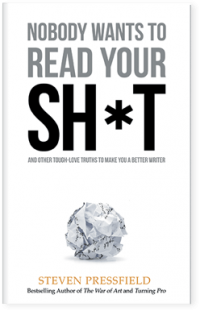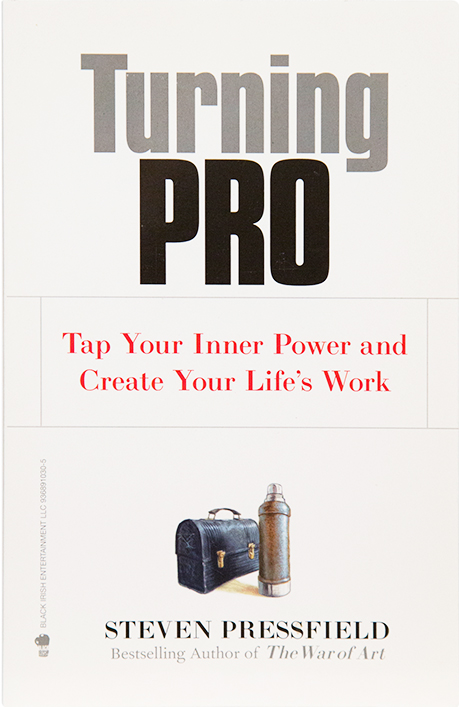Why You Need to Know About Crowdfunding

Want to wage a successful outreach campaign for the launch of your new book or album or film or restaurant or _________ (fill in the blank)?
Mimic successful crowdfunding campaigns.
While you might not be raising funds via Kickstarter or Indiegogo, you’ll need to employ the same steps as those driving crowdfunding campaigns on these sites.
Getting Ready
This is when the heavy lifting takes place.
You’ll need to identify your audience and establish your messaging (and the frequency, priority and placement of your messaging).
Before you start, though, read “Hacking Kickstarter: How to Raise $100,000 in 10 Days (Includes Successful Templates, E-mails, etc.)” by Tim Ferriss and Mike Del Ponte, “Tips on Sucks-Less Crowdfunding” by Gareth Branwyn, and the posts on Clay Hebert’s “Crowdfunding Hacks” site.
1) Identify Your Audience
Last week, Clayton Luz posted the following comment in response to Steve Pressfield’s “Crowdfunding Pt 1” interview with Jeff Simon, about Jeff’s Indiegogo campaign:
It was my understanding that crowdfunding only works if you have an established audience, which makes sense. For a writer like me who is close to finishing his crime novel, I don’t have followers, not yet anyway. That said, what would be the efficacy of attempting Kickstarter? Would it still work if I were to market via social media and guerilla marketing tactics? I am about a month or two away from finishing and having it professionally proofread and edited. But that costs money, as does scaling back on my day-job hours. Plus, I am developing an author platform featuring a blog and a FB Author Page. I am a published writer with a single but notable award from a prestigious literary pub three years ago (Best New Author). Any advice would be greatly welcomed!
Clayton’s right about the need for an audience. Whether it’s a crowdfunding campaign you’re launching or not, it helps to have an audience in place (think of the success of the audience-already-in-place Veronica Mars Kickstarter campaign).
If you don’t have an audience, you have to earn one (Yes, EARN one. Read Chuck Wendig’s brilliance on earning via “25 Ways to Earn Your Audience.”)
Once you have your head around earning, go back to the sections within Tim’s and Mike’s article about identifying your audience. Copy. Copy. Copy. AND: Apply the same steps to identify your desired audience. Derick Tsai of Magnus Rex Studio turned me onto this article after he and his team achieved success, following many of the steps within it, for Magnus Rex’s RE:INVENT Kickstarter campaign.
Throughout the article, Tim’s two cents appear via notes here and there within Mike’s portion of the article. My two cents follow:
In keeping with Tim’s 4-Hour Workweek advice, think about what makes the most sense. You’ve got a lot ahead of you. What connections will offer the greatest return investment?
For Steve, one three-hour interview with Hugh Hewitt sold more copies of his new book, The Lion’ Gate, than the week’s worth of interviews his publisher scheduled. Does that mean you should ditch the smaller outlets? No. Large audiences don’t always translate into book sales. It means you need to focus on the quality of the person or outlet first. Hugh does his homework and his audience responds by buying books. You’ll see the same with hosts of smaller programs, too. You’ll also run across hosts that don’t show up prepared—and thus don’t make an impact on their audience—as well as large sites, with large audiences, that don’t have the power to move any needle. A review of your work becomes lost within its pages, even though millions visit the site daily.
Think quality and movement. What will help earn the audience you desire—and move them to buy, donate, share, and so on?
Don’t get stuck on the obvious either. For example, if your book relates to the military (which many of Steve’s do), don’t focus on military outlets alone. Connect with the audience where they relax—not just where they work. The example I always give is of Crossfit linking to a military-related post on Steve’s site a few years back. That link generated more traffic than many of the military outlets we’d approached—as well as that of the New York Times and other traditional news outlets that covered the piece, too. Why? Those in the military have interests outside the military. You’ll find quite a few involved with Crossfit. Same thing applies to connecting with other audiences. Go beyond approaching them where they work. Find them where they hang out, too.
As you identify your audience, establish a database such as Highrise to track future contact information and correspondence—and commit to updating it every day.
2) Establish and Prioritize Your Messaging
You’ve identified the audience you want, but you don’t have them yet. The content you develop—and your behavior—will determine if you earn them.
Re-read Chuck Wendig’s “25 Ways to Earn Your Audience” and watch The Shadowboxers’ Kickstarter Campaign video.
The Shadowboxers cut a serious video as they ramped up for their campaign to raise funds for their first album. “We showed it to our team, which thought it was good, but . . . We decided to go the comedic route instead,” said band-member Adam Hoffman. “We really embrace having fun. Our stage banter and interviews are ridiculous at times.” So, they went more Jerry Lewis than Dean Martin, and meshed the content of their campaign with their personalities. “How can we be most honest?” they asked. Phat Beets and The Rock—both featured within the video—help provide the answer. They were true to themselves—and that ran through the rest of the campaign and into how they interact with each other and with their audience today.
Magnus Rex’s Kickstarter video ran on the inspirational track, while another of my favorites, for Gareth Branwyn’s Kickstarter campaign, touched on my fascination with why some people are ahead of the times and others aren’t. Gareth is on the ahead side. He’s the only person I know who can say he contributed to the first digital media to be shipped with a record (He contributed to the floppy disk included with the special edition of Billy Idol’s Cyber Punk album) in addition to to being involved with a long list of other leading-the-way projects (Beyond Cyberpunk anyone?)
Then there’s the Indiegogo campaign video for “Camp Abercorn,” which Steve has been interviewing Jeff about these past few weeks. Watch it and you’ll find yourself within the series. “Magical” came to mind as I watched it—as did “clever” once the Q&A at the end hit.
Outside of video content, think about articles, op-eds and e-mails—and think in terms of perennials and annuals. What articles are good for right now? What op-eds could be written in advance and then tied to news events? Which e-mails will work as boilerplate templates and which need personalization? In the post “Portrait of a Launch” you can check out the different e-mails lined up for the launch of The Authentic Swing. They seem like simple things, but they’re the last thing you want to focus on writing and lining up after a campaign has launched. This sentiment echoes Mike’s:
One tool that we did not use, but should have, is Boomerang, a Gmail plug-in that allows you to schedule emails. We crafted emails to our influencers and in-the-know friends the day of our launch, using TextExpander, then slightly customized each one. What we should have done is write and save these personalized emails a few days before we launched. That way, we could have scheduled them to be automatically sent by Boomerang the second we launched. This would have freed up many valuable hours on launch day.
Then there’s placement. The following from Gareth hold’s true for all sites (campaign-related or not):
Create a High-Impact Project Page—Make sure your KS page is well-designed, well-thought-out in terms of information organization, and is visually appealing. Not only do you want to make it easy for people to find the info they need, you want them to gain a certain degree of confidence in your project and your team by how your campaign is being conducted.
3) Budget (Time and Money) for Distribution
Almost every person I asked mentioned that they underestimated the distribution process. They didn’t budget for the time it takes to pull a mailing together or the cost of the mailing. It’s an easy step to miss during the prep period because it takes place at the end of the crowdfunding campaign. (Read the “Easy on the Rewards, There, Santa Claus” portion of Gareth’s article.)
Seth Godin used a fulfillment house to ship incentives connected to his Kickstarter campaign and recommended contacting Robyn Bayless ([email protected]) at Global Fulfillment about their services.
He also mentioned that 18-plus months after his Kickstarter campaign, he’s still receiving addresses from Kickstarter, from people who forgot about the campaign and expect him to “ramp up the shipping again.” He suggested setting “an expiration date and refund people who don’t get you an address.” This will save you from diving into shipping again.
If you choose to handle fulfillment yourself, research your shipping options. The United States’ Media Mail option is inexpensive, but it’s also unreliable. FedEx has a Smart Post option that partners with the USPS. FedEx handles the shipping of your package, all the way to the post office closest to its destination. From there, the post office delivers the package to its final destination. For small packages—an average-sized book, a DVD, or anything else within the two-pound range—the service is competitive with the USPS’s media mail (but with the customer service and tracking of FedEx).
For those not tied to shipping incentives, part of budgeting involves deciding to whom packages should be sent. Which contacts will accept digital materials and which ones do you have to send hardcopies? *This is key for international shipping, which is expensive. When does it make sense to send a digital copy and when does it make sense to spend $100 to ship at $24.95 product abroad?
The Campaign
Before you launch, two slices of advice from Gareth and Seth:
Launching a crowdfunding campaign is a little like grabbing onto the tail of a comet. The moment your campaign launches, and your phone starts happily chiming away with each new pledge, you fall into a dizzying vortex that pulls at you 24/7, for 30 days (or whatever the length of your campaign).
—Gareth
Be super clear about what you’re promising. And make the rules really clear. And expect it will be harder than you think.
—Seth
“Grabbing onto the tail of a comet” and “expect it will be harder than you think” apply to all campaigns.
1) Anxiety (and avoiding the drain)
When I met him at a house show and queried about his Kickstarter campaign, Chris Kasper mentioned the anxiety of the campaign that starts at this stage. It’s normal—again, whether crowdfunding or not. There’s a lot at play. And, as Gareth said, it’s like “grabbing onto the tail of a comet.”
AVOID comparing your campaign to the campaign of others. A few years ago I worked with an author who traveled quite a bit, so I ended up coordinating his campaign with the marketing director for his company. Around the time my author’s book launched, a similar book by another author launched. The marketing director took to chasing down every media “hit” related to the other author. When I mentioned the importance of focusing on our campaign and not chasing the other author, he said that attitude was “reprehensible.” He had become the drain in the “Be the fountain, not the drain” portion of Chuck’s article. Certainly, keep an eye on what’s going on around you, but don’t become consumed by the campaigns of others. If you keep score, you’ll feel the pain of the drain and dry out.
2) Enlist Your Friends and Family
I didn’t know Dean Putney, but through Gareth Branwyn, I found out about Dean’s Kickstarter campaign. In addition to being a history fan, I’m obsessed with digitizing old documents and images to 1) preserve them and 2) grant others greater access to them. Dean’s project hit both. Gareth knew of my interest in history and provided the introduction. The day Dean’s book arrived, my son and I spent the evening going through the images, page by page. Today it sits on the livingroom bookshelf, sandwiched between the entire Diary of a Wimpy Kid and Harry Potter series (prime placement in our household: easy to access, among the books most-often pulled out for reading).
In the case of Greg Campbell’s Kickstarter campaign, to raise funds for his documentary about Chris Hondros, I had a personal connection. I attended high school with the Chris’ younger brother, Dean. Though I didn’t know his brother, I always admired Dean and wanted to see his brother’s story shared. I learned about the campaign via Facebook via, yes, another friend.
3) Update, Update, Update
Stealing more from Gareth here:
Your KS webpage should be a living document that’s growing and being added to throughout your campaign. You want to give people a reason to come back. You want people to keep your project and campaign on their radars so that they’ll be reminded to forward it to friends, tweet it, and otherwise engage with it.
Apply the same to other campaigns. It isn’t enough to earn an audience. You have to maintain it, too.
4) Say Thank You
As you move forward, remember that every thank you that you say or write has force multiplying potential. To every funder supporting them, The Shadowboxers sent a personalized thank you note—and called out funders on social media, giving them some public love, too.
If you already have their support, why continue reaching out to them?
- Because it’s the right thing to do. If they’re going to buy into your work and share it, you should say thank you. (Re-read #13 on Chuck’s list, while paying attention to #14, too).
- And, after you’ve said thank you—because you really mean it and not because you want something in return—it’ll remind them, in Gareth’s words “to forward it to friend, tweet it, and otherwise engage with it.”
As a part of their thank you’s The Shadowboxers started inviting fans to suggest songs they’d like them to cover. This led to their monthly cover series, which led to them catching Justin Timberlake’s attention after they covered one of his songs. Not bad. (And if you happen to see this article, Justin, make sure you catch the guys in person. If you like them on YouTube, you’ll be blown away by the live version.)
Just as The Shadowboxers’ cover series followed their thank you’s, Steve’s “Writing Wednesdays” series followed our thank you’s. Around the 2009 period, after Steve launched his blog, we started reaching out to readers on other blogs, thanking them for following his work. Their replies expressed an interest in learning more from Steve and “Writing Wednesdays” followed.
Just Before the Campaign Ends
Another solid from Gareth:
Have a Post-Campaign KS Page Ready Before Your Campaign Ends — Here’s an IMPORTANT end-of-campaign lesson I learned (the hard way). Your KS page can be updated during the entire campaign (except pledge levels which get locked after anyone pledges at that reward level), but your entire KS content (except for the Updates area) gets locked the second your campaign ends. I was in the middle of updating my page (summarizing the campaign, removing junk I didn’t need to persist on the page post-campaign, telling people about my new webpage where they could continue to order the book, etc) when the campaign ended and I got locked out. Have a plan in place for how you want the page to end up and make sure to implement those changes before the clock runs out.
The non-crowdfunding version of this? Keep your project alive, whether it is via a books page, similar to Steve’s site, or through project updates similar to those on Gareth’s site.
After the Campaign
Send more thank you’s.
Re-read old e-mails and ensure that you’ve updated the contact information in your database, as well as notes about how you connected with different individuals and your conversations/etc.
Update your audience. As long as you aren’t sending spam, they’ll be happy to receive news about upcoming projects and launches.
Keep creating and sharing and earning.
Closing Comments
One more slice from Gareth:
Many people new to Kickstarter don’t realize exactly what’s going on here. On Facebook, one person called it “Internet panhandling.” It is far from that! For a publishing project like mine, it’s basically a way of pre-ordering my book before it’s finished, allowing me to pay for production myself and keeping Ramen noodles in my bowl while I complete it.
Not only is crowdfunding not panhandling, its something we’ve all been doing for years—but in reverse order. Audiences have always invested after the product is available. This version offers the opportunity to invest at the beginning. Rather than a publisher or studio acting like a bank with high interest rates, audiences provide the advance funding and artists and entrepreneurs retain creative control. AND: Instead of learning about projects through the media we hear about more of them through the people who are actually creating them.
For those who aren’t crowdfunding, the campaigns provide examples of successes, models to follow, which you’d be hard pressed to find in so much detail in the past. Pay attention. The route’s been paved. You don’t have to follow it, but learn enough to avoid creating potholes when you pave your own way.




Callie, thanks for the wealth of information and resources you pulled together here! It’s a new world to me, and I’ll be hanging on to this post for reference.
Ten years ago we funded our first book by pre-selling to our established customer list. We basically employed the principles outlined above using postcards, e-mail, telephone and carrier pigeon.
We repeated the process last year with a successful Indiegogo campaign:
https://www.indiegogo.com/projects/past-medical-history
The crowdsourcing platform was no less work, but our energies were more concentrated, and even more effective. In addition to our campaign donors, the Indiegogo project prompted many of our customers to donate in the ways they were already comfortable with: online pre-ordering, phone orders, and checks in the mail.
We’re still getting positive attention and marketing momentum from the effort, with increased traffic to our book and studio web sites, and continuing traffic in social media pages. Best of all, my first book of stories is published and paid for, and we’re still making sales.
Thanks for sharing your experience, Don – and the link to your campaign.
I laughed at your mention of the carrier pigeon. Things have changed, but the advance work is the same – just easier to accomplish to accomplish these days.
If you’re open to sharing . . . What have you done post-campaign to keep in contact with your funders and how have you kept sales going?
Thanks again, Don!
Callie
There’s so much amazing info on here, Callie, I don’t know even know where to start. Suffice it to say, I’ve already printed your post out for future reference. TY!
Tsunami of value. Thanks, Callie.
Crowdfunding is for healthy enthusiastic energetic people.
It takes a 24/7 mentality.
I loved being part of the Veronica Mars Kickstarter – it was fun – but it was exhausting just reading about it.
Good to know such tings exist – smart to know if you could ever go that route with your own books. EVEN IF someone else handled all the details – there would still be the planning.
I love the Kickstarters I’ve supported – and have no desire to ever do one of my own. I admire those who can – and envy them a little. I consider it part of my education to have participated – now I know what they are and how they work more than I did at the beginning.
I can only imagine the insider part.
Insanely helpful information, Callie. Thank you for sharing your experience and for turning us on to other great info and resources that can help us.
Callie,
BOATLOAD of information. I love the ‘how’. Frequently we get all spun up and excited about doing something–but how the hell do I take the first steps?!?!
Perfect. Thank you. Like Marcy–printed & bookmarked for the future.
bsn
Callie:
4) Say Thank You
Thanks for addressing my question from earlier this week. I’m grateful for this blog and everyone’s hard work to make it such a terrific resource. Cheers,
I’ve done a lot of research on the topic, and will launch my own crowd funding campaign (through Pubslush) in a few weeks. Still, this is one of the best how-to guides I’ve seen. It’s worth printing out and pinning on the wall. Definitely deserves repeated reads and being referenced each step of the way. Bookmark it! Callie, I can’t thank you enough for this insightful, informative and inspirational post.